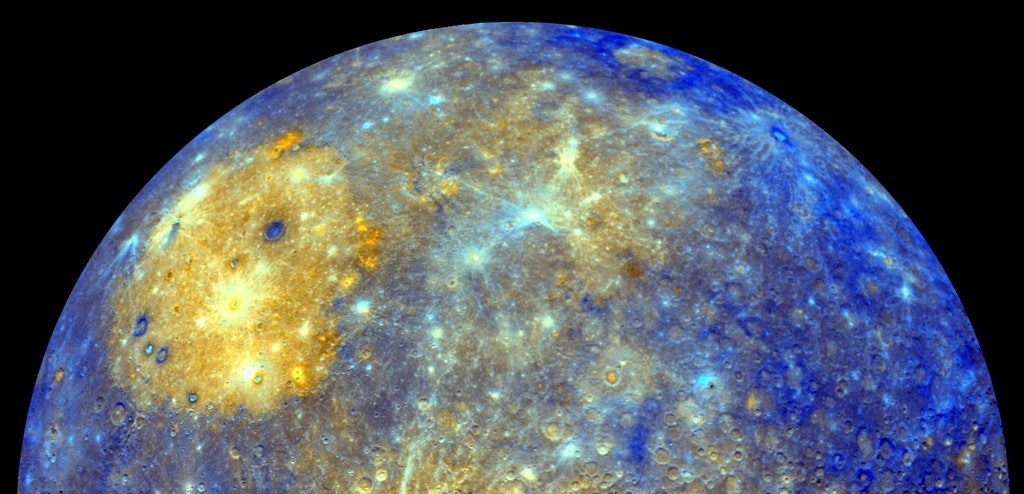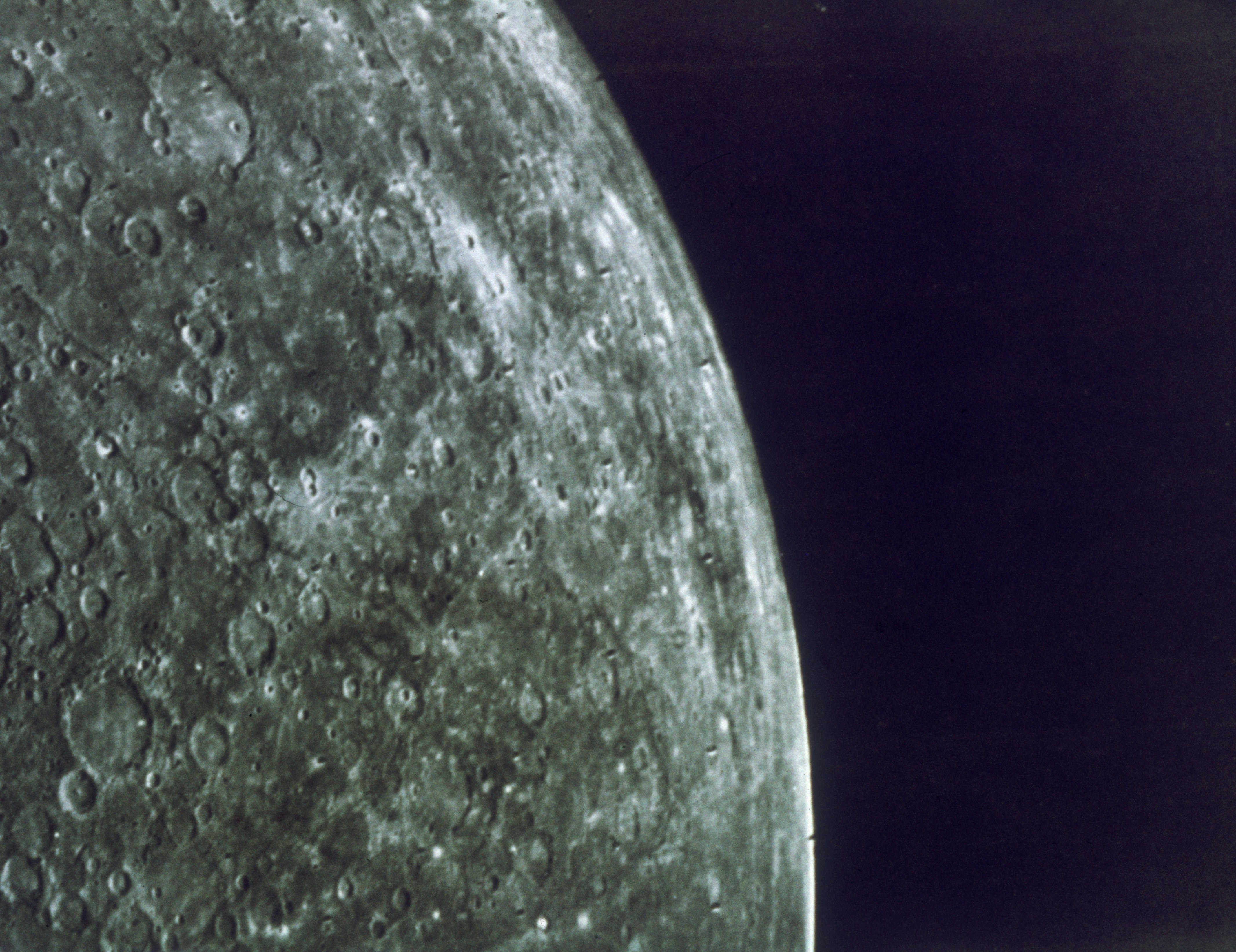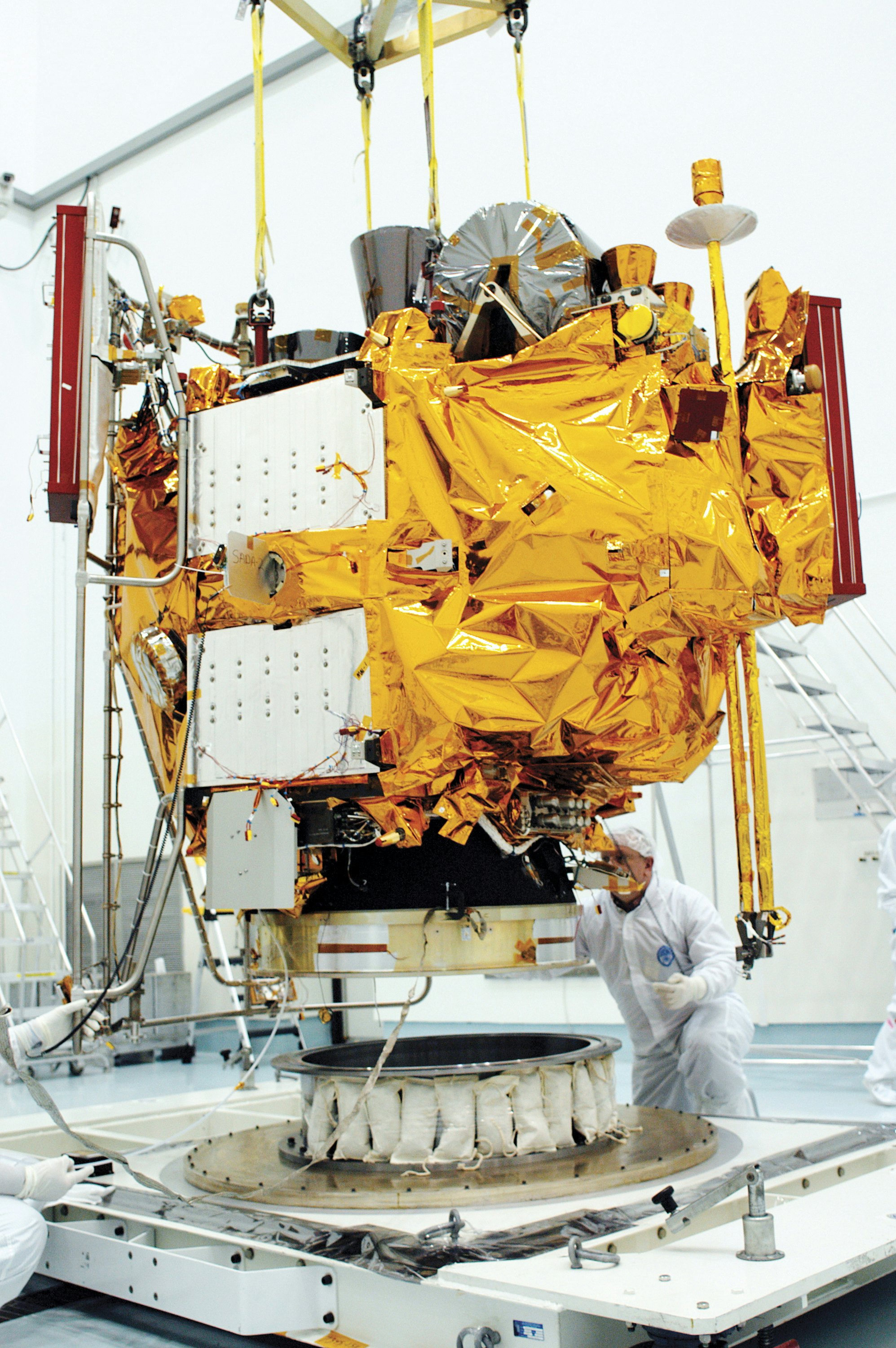
Diamonds aren't the traditional 20th anniversary gift, but we're not going to complain, since these came from a spacecraft that crashed into the surface of Mercury back in 2015.
NASA's MESSENGER spacecraft launched 20 years ago, on August 2, 2004, and although its mission ended in 2015, MESSENGER's observations of the Sun-scorched planet are still yielding new discoveries today. A recent study of MESSENGER data suggests that a 10-mile-thick layer of diamond might lie deep inside Mercury, between the planet's mantle and its core. That's a heck of a find from a defunct spacecraft!
Yongjiang Xu, of the Center for High Pressure Science and Technology Advanced Research in Beijing, and his colleagues published their work in the journal Nature Communications.

Diamonds In The Rough
Like most rocky planets, Mercury was once a seething, churning ball of magma. Over time, that magma cooled and solidified, and in the process, it settled into layers — giving the planet a dense inner core, a slightly lighter and mostly fluid mantle, and a light, rocky outer crust. To simulate that process, Xu and his colleagues made digital models using data from MESSENGER that offered clues about Mercury's inner structure. They also squashed a lot of carbon samples in the lab to see how the material behaved under tremendous heat and pressure.
According to Xu and his colleagues’ simulations, there should be a layer of diamond lying atop Mercury's core and just beneath its mantle — and it could be between 9 and 11 miles thick. The diamond would have crystallized out of an ocean of carbon-rich magma that once covered Mercury billions of years ago.
Meanwhile, on the surface, carbon crystallized into a different (and much less sparkly) form called graphite. Graphite and diamond are both pure carbon, but the atoms are arranged in different crystal structures, which gives the two materials very different properties. At the surface, where pressures and temperatures were much lower, the carbon formed dark, soft graphite. Deep below, the intense pressure beneath Mercury's mantle pressed carbon into diamond — if Xu and his colleagues are right.

Don’t Shoot The Messenger
The finding is just the latest scientific gem MESSENGER has laid at our feet since its launch 20 years ago. It took four years just to reach Mercury in 2008, and then the spacecraft had to make a carefully-planned series of flybys to slow down enough to enter Mercury's orbit without also accidentally getting pulled into the Sun. (Trying to maneuver a spacecraft that close to the Sun's gravitational influence is a challenge.) MESSENGER settled into Mercury's orbit in 2011.
During its four years in orbit around Mercury, MESSENGER revealed some surprising things about our Solar System's innermost planet. One of those is the graphite that dusts its surface, which gives the planet's surface its dark, patchy appearance — and gave Xu and his colleagues the idea for their recent simulations.
MESSENGER also revealed that Mercury has tectonic quakes, similar to the quakes that happen on Earth and Mars, and that the already-small planet is actually shrinking a little bit every year. The mission found evidence of frozen water deep in the permanent shadows of some of Mercury’s polar craters. And there's even a hint that some organic chemistry, and maybe even very simple cells, once could have eked out an existence beneath the planet's surface.
Xu and his colleagues’ simulations may help explain another of MESSENGER's most important discoveries: Mercury's surprisingly strong magnetic field.
For such a small planet, Mercury boasts a disproportionately powerful magnetic field. If Xu and his colleagues are right, the layer of diamond lying beneath the mantle could be changing how heat flows from the core to the mantle (because diamond transfers heat very efficiently). That, in turn, could be changing how convection, currents driven by hot liquid rising and cool liquid sinking, happens in the molten outer layers of Mercury's core. And since all that flowing molten metal is part of what generates the magnetic field, the diamond layer could be a big part of the explanation.
The MESSENGER mission came to a dramatic end on April 30, 2015, when the spacecraft smashed into Mercury's surface at more than 8,000 miles per hour. Because MESSENGER was on the far side of the planet at the time, its human team back on Earth didn't witness its final moments; they heard only the silence of the dead spacecraft failing to resume radio contact a few moments later.
MESSENGER set the foundation for the European Space Agency's BepiColombo mission, and it may also shed light on the interiors of other rocky planets.
"The processes that led to the formation of a diamond layer on Mercury might also have occurred on other planets, potentially leaving similar signatures," says Yanhao Lin, also of the Center for High Pressure Science and Technology Advanced Research in Beijing and a coauthor of the recent study, in a recent statement. The riches of the Universe seem to only grow with time.







